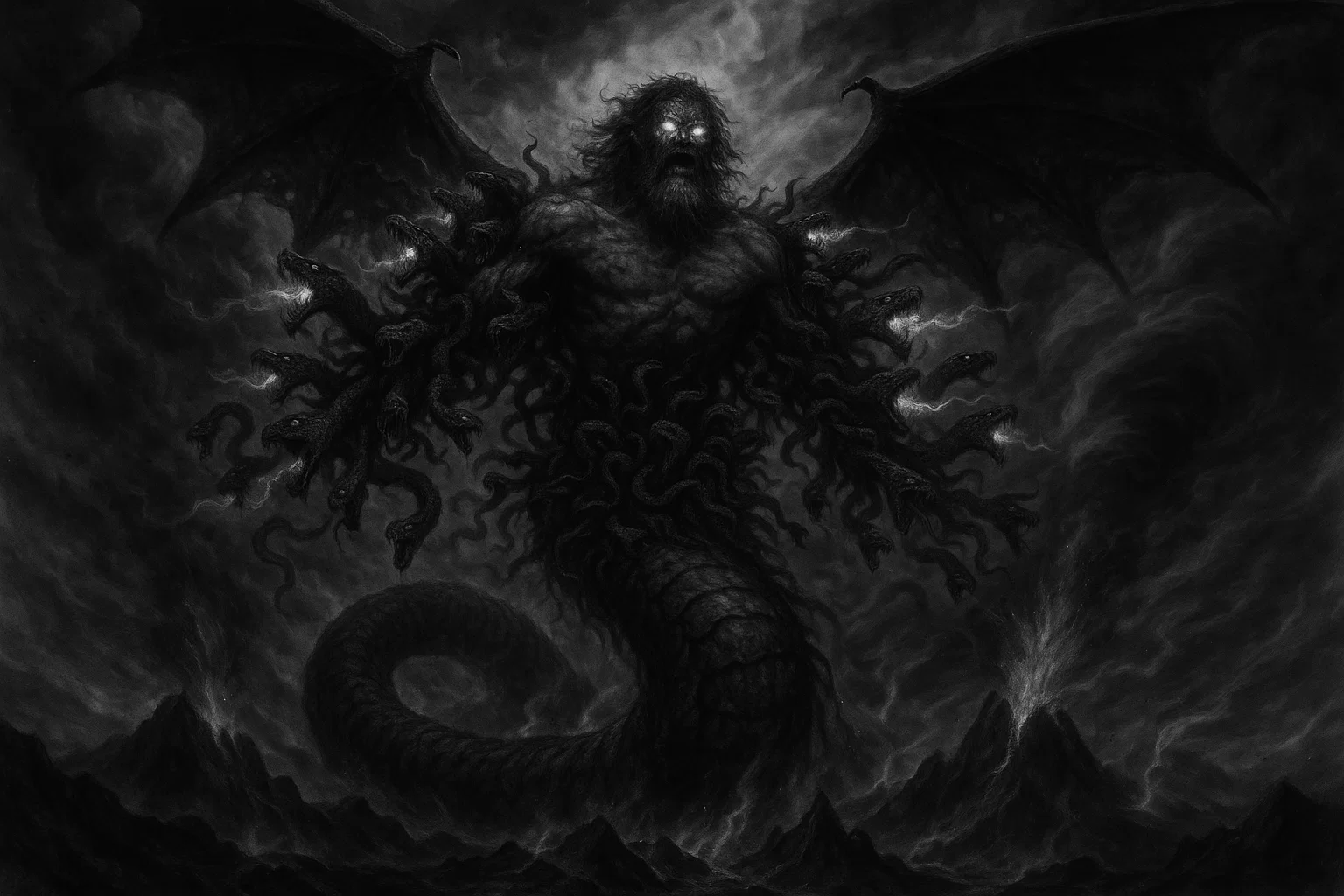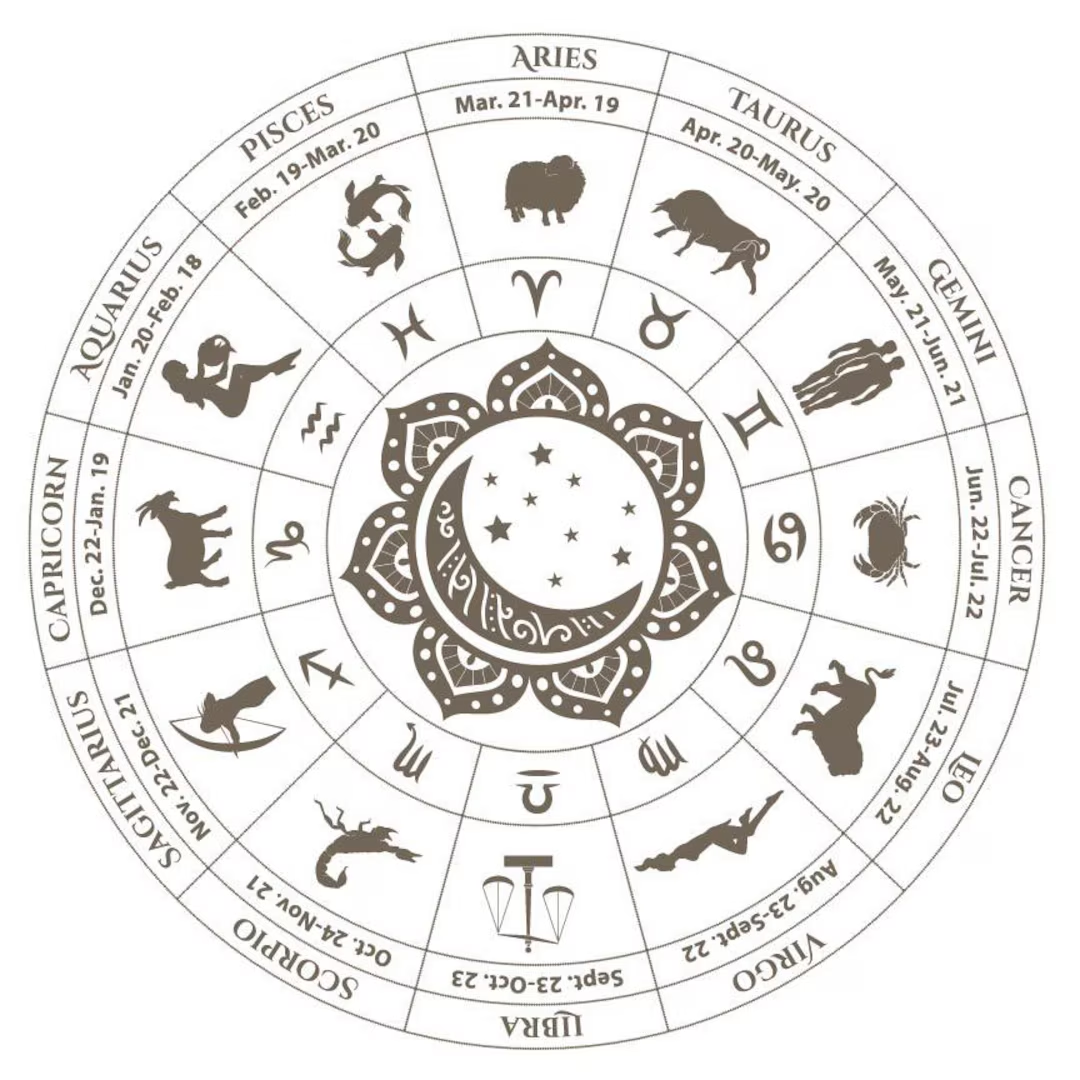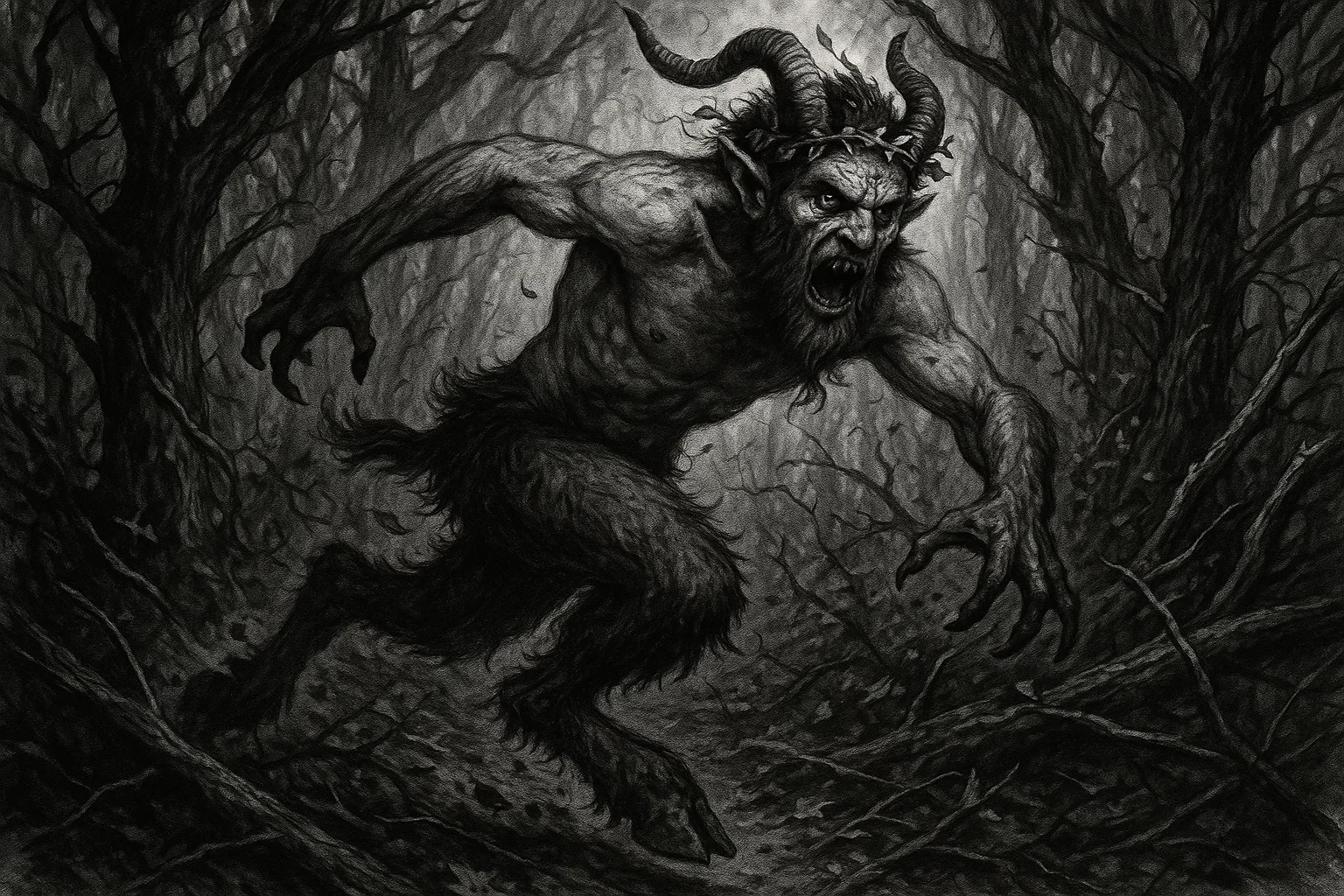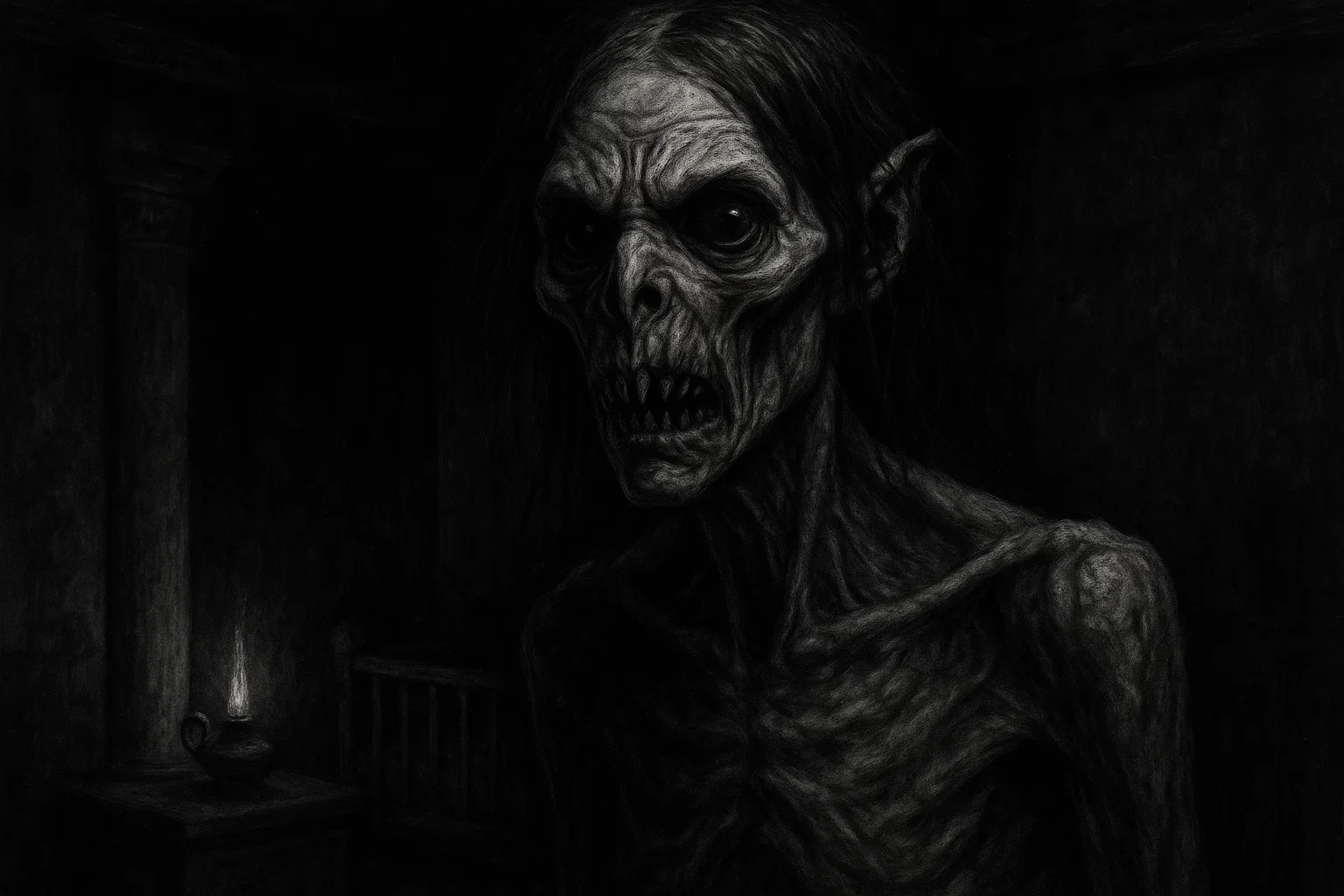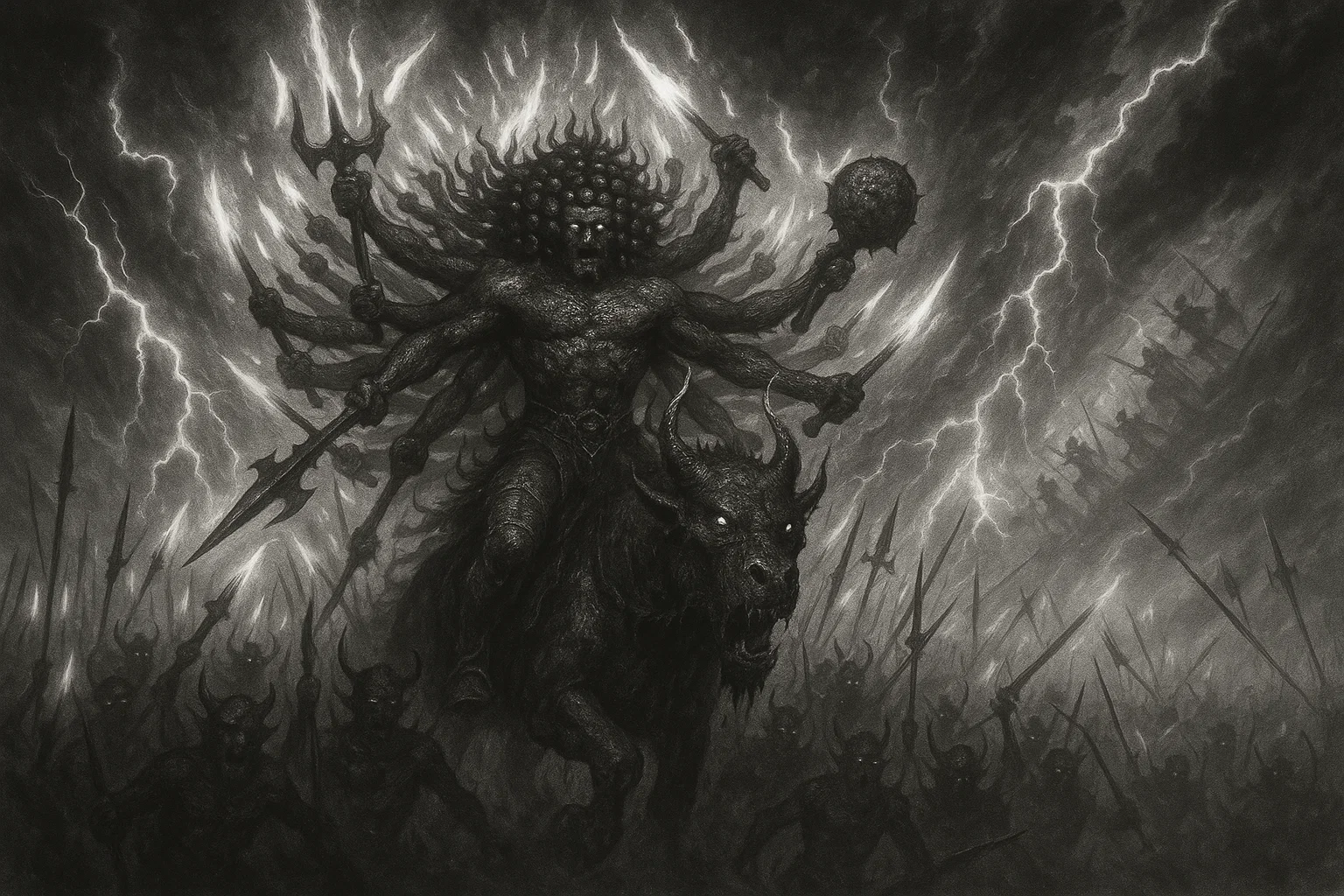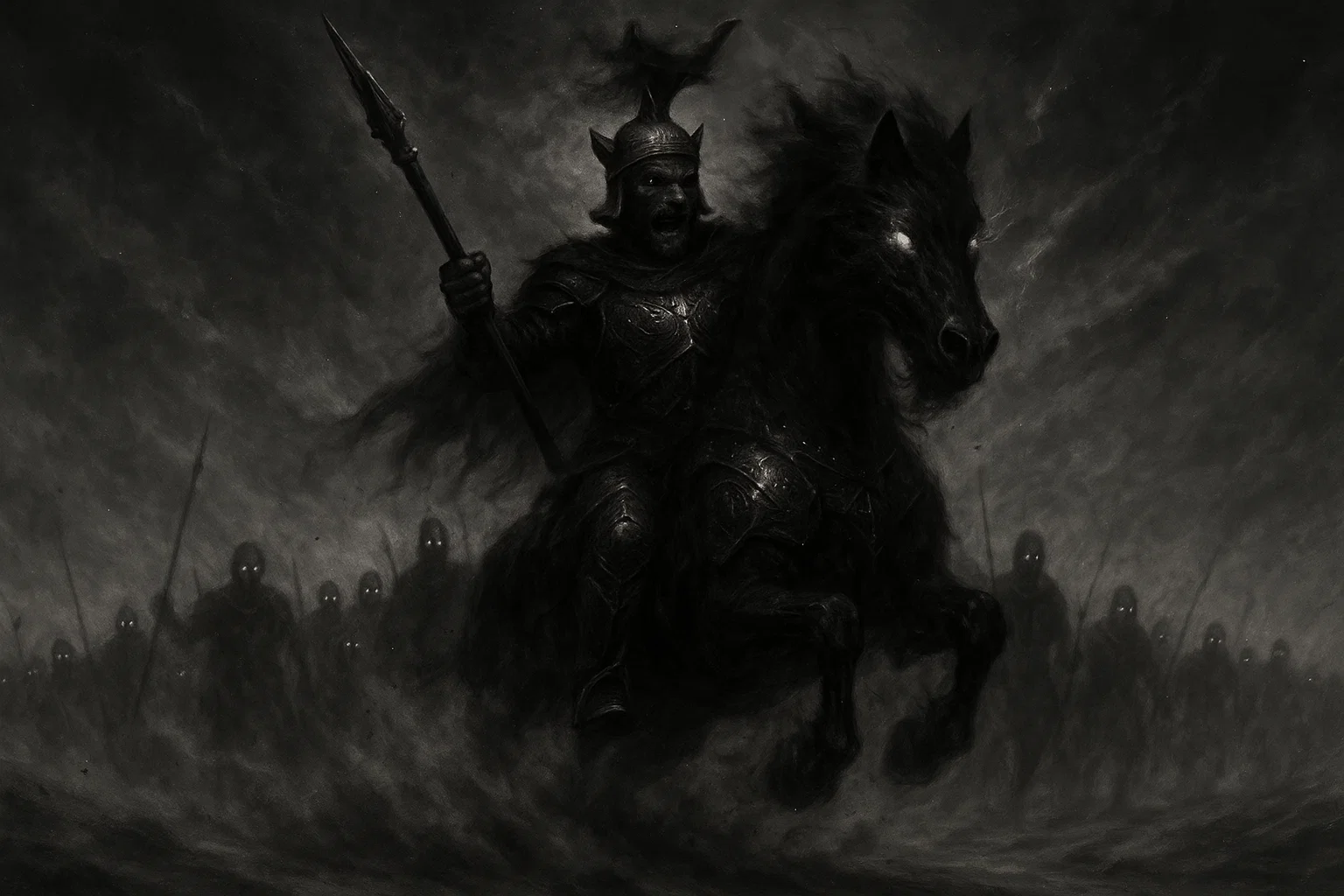Typhon (Typhoeus) is the deadliest and most formidable monster in Greek mythology. He was the youngest child of Gaia (Earth) and Tartarus (the deep abyss of the Underworld). He was created by Gaia as a final weapon to challenge and overthrow the supremacy of the Olympian gods, particularly Zeus, after the defeat of the Titans and the Giants.
Typhon’s existence represents the final, cataclysmic conflict between the primordial, chaotic forces of nature and the ordered, civilized rule of the Olympians.
Described as a gigantic entity, his sheer size allowed him to scrape the stars and reach from the East to the West when his arms were outstretched. He is the personification of volcanic forces and destructive, fierce winds (the source of the word “typhoon”).
His union with the half-woman, half-serpent Echidna established him as the progenitor of the most famous monsters in Greek lore, earning him the title, Father of All Monsters.
Summary
Key Takeaways
| Attribute | Details |
| Names | Typhon, Typhoeus, Typhaon, Typhos; potentially related to the Greek word for ‘whirlwind’ or ‘to smoke’. |
| Nature | Monstrous Giant, Personification of Volcanic Forces and Destructive Winds. |
| Species | Hybrid (Humanoid and Serpentine). |
| Appearance | Gigantic stature (head scraping the stars), human torso, massive serpentine coils for the lower body, a hundred snake or dragon heads from his arms/shoulders, wings, filthy hair/beard, and eyes that flash fire. |
| Area | The land of the Arimi in Cilicia, and later imprisoned beneath volcanic regions like Mount Etna and the island of Ischia. |
| Creation | Born from the union of Gaia and Tartarus (most common account), or solely by Hera in anger at Zeus’s solo birth of Athena. |
| Weaknesses | Zeus’s mastery of the Thunderbolts and divine weapons; the restoration of Zeus’s stolen sinews by Hermes and Pan. |
| First Known | First mentioned in Homer’s Iliad (c. 8th century BCE), with the first detailed account in Hesiod’s Theogony (c. 700 BCE). |
| Myth Origin | Ancient Greek mythology, post-Titanomachy succession myth. |
| Strengths | Immense strength and size, fire-breathing, ability to hurl molten rock and mountains, control over catastrophic storms and deadly winds, spewing poison. |
| Associated Creatures | His consort Echidna, and his monstrous offspring including Cerberus, Hydra, Chimera, Sphinx, and the Nemean Lion. |
| Diet | Not explicitly stated as having a diet, but his destructive nature suggests a consumption of order and life. |
Who or What Is Typhon?
Typhon is the ultimate, final antagonist in the Greek succession myth, created by the primordial forces specifically to dethrone the new king of the gods, Zeus.
While the Titans and the Giants were defeated in earlier conflicts, Typhon was the greatest and most horrific challenge to Olympian rule. He represents the untamed savagery of nature, a monstrous force born from the deepest parts of the earth (Gaia) and the abyssal Underworld (Tartarus), embodying the primal chaos that the structured order of Olympus sought to contain.
He is often classified as a giant due to his immense size and parentage. Yet, his appearance is uniquely monstrous, earning him the title of father of all Greek monsters (a title he shares with his mate, Echidna).
Typhon’s battle with Zeus is not merely a physical struggle but a cosmic war between the establishment of divine order and the ever-present threat of total chaos—an event so cataclysmic that it shook the foundations of the cosmos, forcing most of the Olympian gods to flee in terror.
Your Personalized, Hyper Accurate Moon & Astrology Reading
Limited time offer: Get your FREE, fully personalized Moon & Astrology Reading that takes astrology to a whole new level. Discover the secret depths of your personality, relationships, and true purpose in life.
Genealogy
| Relation | Name | Notes |
| Father | Tartarus | Primordial deep abyss and dungeon of the Underworld. |
| Mother | Gaia | The Earth goddess. |
| Consort | Echidna | Half-woman, half-serpent ‘mother of monsters’. |
| Offspring (Major) | Cerberus | Three-headed hound of Hades. |
| Offspring (Major) | Lernaean Hydra | Multi-headed serpent. |
| Offspring (Major) | Chimera | Fire-breathing hybrid monster (lion, goat, snake). |
| Offspring (Major) | Sphinx | Riddle-posing winged lion-woman. |
| Offspring (Major) | Nemean Lion | Invulnerable lion slain by Heracles. |
| Siblings | Titans, Giants, Cyclopes, Hecatoncheires | All children of Gaia and Uranus (or Gaia and Tartarus, as in the case of the Giants). |
Etymology
The name Typhon (Τυφῶν, Typhōn) and its variant Typhoeus (Τυφωεύς, Typhōeus) are deeply rooted in Greek terminology for storms and other natural phenomena. The name is generally believed to be connected to the Greek word typhos (τῦφος), which can mean ‘smoke,’ ‘vapor,’ or ‘stupor’ (as in a feverish state).
Another significant link is to the Greek word typhōs (τυφώς), meaning ‘whirlwind’ or ‘violent storm’. This connection directly references his power over destructive winds, and it is the direct etymological ancestor of the modern English word ‘typhoon,’ a term for a powerful tropical cyclone in the western Pacific or Indian Oceans.
Researchers also note potential influence from Near Eastern myths. Some accounts, such as those from Herodotus, connected Typhon to the Egyptian god Set (or Seth), who was also associated with storms and chaos.
The myth of a storm god battling a chaos serpent or dragon has proto-Indo-European roots and parallels in other mythologies, such as the Babylonian myth of Marduk and Tiamat or the Sumerian tale of Ninurta and Azag-Labbu.
You May Also Like: The Gashadokuro: Japan’s Giant Skeleton Yokai of Vengeful Spirits
What Does Typhon Look Like?
The physical description of Typhon is consistently one of immense size and horrific hybridity across ancient sources, though details vary. He was a monster of such colossal proportions that his head was said to scrape the stars, and he towered over the mountains.
His form was a grotesque composite: his upper half was generally that of a man, though of a brutish and savage appearance, with a filthy, shaggy head and beard and fire flashing from his eyes.
When he extended his massive arms, they could reach from the sunrise in the east to the sunset in the west. Instead of normal hands, a hundred snake or dragon heads sprouted from his arms and shoulders, hissing and spitting poison.
Below his thighs, his legs were not human. Still, they consisted of massive coils of vipers which, when fully stretched, could reach right up to his head, constantly emitting violent hisses. His body was also covered in wings, which, when outstretched, darkened the sun.
In later accounts, his hundred heads were described as various wild animals, including lions, boars, and bulls, and his mouth could spew fiery rocks and molten lava like a volcano.
Mythology
Typhon’s mythology focuses on his single, cataclysmic confrontation with Zeus, known as the Typhonomachy, which served as the final challenge to the Olympian establishment. The fullest and most important early account comes from Hesiod’s Theogony (c. 700 BCE). However, Typhon is referenced earlier in Homer’s Iliad.
According to Hesiod, Typhon was conceived by Gaia, who lay with Tartarus in a cave in Cilicia, as an act of revenge against Zeus for his defeat and imprisonment of the Giants and Titans. His birth was the ultimate protest by primordial Earth against the new celestial order.
Other versions, such as the one found in the Homeric Hymn to Apollo, state that the goddess Hera, angry that Zeus had produced Athena without her, struck the Earth with her hand and prayed to Gaia, Uranus, and the Titans to bear a son mightier than Zeus, resulting in Typhon’s birth.
The ensuing battle was a cosmic event. When Typhon launched his attack, the sheer scale of the monster terrified the Olympian gods, causing them to flee Olympus and take refuge in Egypt, where they transformed into animal forms to hide: Zeus became a ram, Hera a cow, Apollo a hawk, Artemis a cat, and so on.
Only Zeus and Athena remained to face the beast. Zeus fought with his lightning bolts and a sickle, engaging Typhon in a series of earth-shattering duels that shook the land, sea, and sky.
The ultimate defeat of Typhon ensured the permanent establishment of Zeus’s rule and the final victory of Olympian order over primordial chaos. Typhon’s imprisonment beneath a volcano—usually Mount Etna—provided the Greeks with a powerful explanation for volcanic eruptions and earthquakes—manifestations of the raging monster struggling to escape his prison.
Awaken XT is unlike anything you’ve ever tried before…
…it’s based off a closely guarded formula that’s said to be able to supercharge your pineal gland and help you access your untapped inner power. With it’s unique blend of extremely hard to source ingredients, Awaken XT helps support the healthy functioning of your pineal gland, as well as your other organs in your body.
Legends
Zeus’s First Defeat and the Theft of the Sinews
The most detailed and dramatic account of the Typhonomachy comes from the mythographer Pseudo-Apollodorus in The Library (c. 1st or 2nd century CE).
Initially, Typhon’s attack was successful, leading to a temporary, shocking defeat for the king of the gods. As Typhon advanced on Olympus, he was so vast that he reached the sky and vomited fiery breath and hurled flaming rocks at Heaven. Zeus struck him with thunderbolts from afar and then engaged him in hand-to-hand combat with a sickle made of adamant.
During the struggle, Typhon managed to wound Zeus severely and then severed the god’s sinews (the tendons that gave him strength and mobility) using the sickle.
Typhon carried the helpless Zeus on his back across the sea to a cave in Cilicia, known as the Corycian Cave. He hid the sinews in a bear-skin and placed them under the guard of the serpent-dragoness Delphyne. Zeus was left lame and unable to move or fight.
You May Also Like: What Is a Vourdalak? The Horrifying Vampire That Hunts Its Own Family
The Retrieval of Zeus’s Strength
With the supreme god incapacitated, the cosmos was plunged into chaos. However, Hermes (the messenger god) and Aegipan (a version of the god Pan) orchestrated a rescue. They approached Delphyne with a clever ruse.
Hermes, known for his cunning, distracted the dragoness with flattery and a story about a prophecy concerning the sinews. At the same time, Aegipan secretly retrieved the sinews from the bear-skin.
The sinews were restored to Zeus, who immediately regained his strength and burst forth from his confinement. The newly invigorated Zeus mounted his chariot drawn by winged horses and pursued Typhon, who was now fleeing, across the sea.
The Final Battle and Imprisonment
The final phase of the battle saw Zeus mercilessly attacking Typhon with his thunderbolts. Typhon, in a bid to restore his strength, reached the mountain Nysa, where the Fates tricked him into eating ephemeral fruits that would weaken him rather than strengthen him.
The fight continued across Thrace, where Typhon hurled entire mountains at Zeus. Still, the King of the Gods either vaporized them with his lightning or deflected them back. It is said that the blood spilled by Typhon on the mountains of Thrace is the reason for their name, Haimos (meaning ‘bloody’).
The final confrontation took place in Sicily. As Typhon was about to cross the sea to escape, Zeus hurled Mount Etna—one of the largest mountains he had deflected—upon the monster, crushing Typhon and trapping him beneath its massive weight.
Typhon was thus permanently imprisoned under the volcano, where his fiery breath triggers Etna’s eruptions, and his struggles cause earthquakes. This cosmic burial secured Zeus’s position as the undisputed ruler of the cosmos.
Typhon vs Other Monsters
| Monster Name | Origin | Key Traits | Weaknesses |
| Typhon | Greek Mythology | Gigantic, 100 snake/dragon heads, fire-breathing, storm creator, half-serpent body. | Zeus’s Thunderbolts, being crushed by Mount Etna. |
| Lernaean Hydra | Greek Mythology | Multi-headed water serpent, regenerates two heads for every one cut off, venomous breath. | Fire (to cauterize the neck stumps), a golden sword, the strength of Heracles. |
| Cerberus | Greek Mythology | Three-headed dog, guard of the Underworld, snake-like features (tail and mane). | A lyre’s music (Orpheus), being subdued by the immense strength of Heracles. |
| Jörmungandr | Norse Mythology | World Serpent, encircles Midgard, immense size, venomous, child of Loki. | Thor’s hammer Mjöllnir, fated to be killed by Thor (but kills him with venom). |
| Tiamat | Babylonian Mythology | Primordial chaos goddess, great sea serpent/dragon, creator of monsters. | The four winds (used to distend her body), the divine weapon of the storm god Marduk (who splits her). |
| Set (Seth) | Egyptian Mythology | God of chaos, storms, desert, violence; depicted as a peculiar animal (Set-animal). | Horus’s superior strength and divine authority (after battling for succession). |
| Balor | Celtic Mythology | Fomorian King, cyclops-like, deadly venomous eye that destroys all it looks upon. | His eye being pierced/smashed by a projectile from his grandson, Lugh. |
| Grendel | Anglo-Saxon Legend | Descendant of Cain, monstrous humanoid, impervious to mortal weapons. | Being stripped of his armor/protection and having his arm ripped off by the hero Beowulf. |
Typhon is unique among these formidable monsters due to his cosmic stature and divine purpose. Unlike creatures like the Lernaean Hydra, Cerberus, or Grendel, who were challenges for heroes, Typhon was created to overthrow the king of the gods, Zeus, and end the reign of the Olympians. His sheer physical size is unparalleled in his own mythology, reaching the heavens.
His closest parallel is Tiamat from Babylonian mythology, as both are primordial entities of chaos born from earlier generations of gods/forces, who are then defeated by the new storm-god of the ruling pantheon (Zeus vs. Typhon; Marduk vs. Tiamat) in a climactic succession myth.
Typhon also shares an affinity with the Jörmungandr, as both are titanic, snake-like children that embody overwhelming natural chaos. However, Typhon is distinct as the progenitor of a massive monstrous lineage. In contrast, creatures like Set or Jörmungandr have fewer direct, monstrous offspring.
You May Also Like: What Is a Draugr? The Undead Monster of Norse Mythology
Powers and Abilities
Typhon possessed powers commensurate with his status as the greatest monster ever born, primarily rooted in the catastrophic forces of nature he personified.
His immense scale alone made him a threat unmatched by any other enemy of the gods. He possessed the strength to challenge and temporarily defeat Zeus and the capacity to throw entire mountains.
His primary destructive ability was linked to fire and wind. Typhon could breathe fire and hurl fiery, molten rocks from his mouth like a volcanic eruption, transforming the environment into a battlefield of elemental destruction.
He was the literal father of all destructive winds—the typhoons—and his breath generated violent storms and whirlwinds that terrorized both gods and mortals. His body, covered in viper coils and multiple heads, gave him numerous points of attack for biting and spewing lethal poison.
This combination of titanic strength, elemental control, and venomous attack made him an all-encompassing engine of destruction:
- Titanic Strength: Possessed sufficient physical might to overcome Zeus in their initial combat and tear his sinews from his body.
- Seismic and Volcanic Control: His movement and rage caused earthquakes, and his body acted as a conduit for volcanic eruptions, spitting fire, lava, and molten rock.
- Anemokinesis (Storm Generation): Directly controlled and personified destructive winds, whirlwinds, and typhoons, using them to rage across the cosmos.
- Pyrokinetics (Fire Breath): Could breathe out powerful gusts of fire and scorching air, similar to a fire-breathing dragon.
- Venom Secretion: The hundred snake and dragon heads on his body were capable of hissing and spewing deadly, corrosive poison.
- Massive Scale: His size was a power in itself, allowing him to scrape the stars and dominate the entire terrestrial landscape.
Can You Defeat a Typhon?
In Greek mythology, the defeat of Typhon was a cosmic necessity achieved only by Zeus’s supreme power and cunning. For a mortal or a lesser deity, defeating Typhon was effectively impossible. Typhon could only be overcome by a force of equal or greater power that represented a superior form of divine order.
The methods that led to Typhon’s final, eternal defeat were:
- Restoration of Zeus’s Full Power: Typhon was temporarily victorious when he removed Zeus’s sinews. The key to his eventual defeat was the retrieval of those sinews by Hermes and Aegipan, which restored Zeus’s strength and enabled him to continue the fight. This suggests that the monster can be defeated only by a fully empowered god.
- The Divine Weaponry of Zeus: Typhon was ultimately subdued by the relentless assault of Zeus’s Thunderbolts (keraunoi), forged by the Cyclopes. These divine, fiery projectiles are the only known weapon capable of inflicting lasting damage on the monster.
- Physical Imprisonment: The final method of defeat was not annihilation but imprisonment. Zeus did not kill Typhon but crushed him beneath Mount Etna (or in other versions, beneath the island of Ischia or in Tartarus itself). This act contained his power and sealed him permanently, allowing his residual rage and fiery breath to manifest only as non-cosmic, localized disasters like volcanic eruptions and earthquakes.
You May Also Like: Who Were the Werewolves of Greifswald?
Conclusion
Typhon is the pivotal figure in Greek cosmogony, representing the final, violent gasp of primordial chaos against the established order of the Olympian gods.
Born of the deep Earth (Gaia) and the Abyss (Tartarus), he was a direct response to Zeus’s authority, making his defeat the crowning achievement of the new divine regime.
His monstrous, chthonic nature—part man, part dragon, with a hundred heads and coils of vipers—cemented his legacy as the Father of All Monsters, a title shared with his mate, Echidna, whose vile brood populated the world with threats for mortal heroes.
The myth of the Typhonomachy is more than a simple monster-slaying tale; it is a foundational narrative that explains the volatile forces of the natural world.
Typhon’s defeat and subsequent eternal imprisonment beneath Mount Etna provided the ancient Greeks with a mythological explanation for devastating volcanic activity and seismic events.

